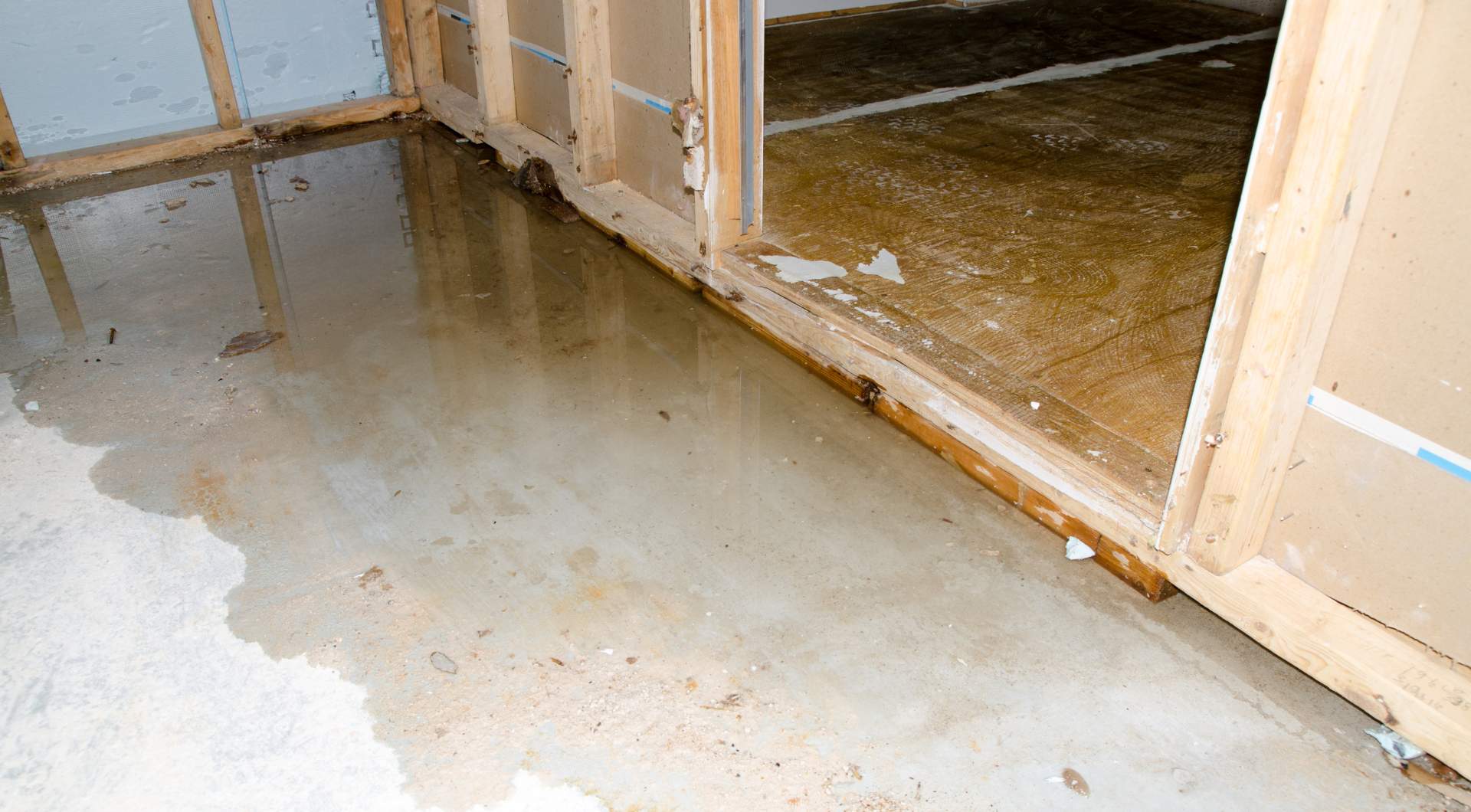Not totally in love with your new indoor swimming pool? Maybe now is not a good time for us to make jokes about the unwelcome water that has invaded your basement. Flooding always seems to come by surprise and is a great way to instantly ruin your day.
It’s OK. With a few important steps you can have your basement look like nothing ever happened. Of course, the extent of the restoration depends on the extent of the flooding, but with enough time and money (or insurance coverage) any basement can be restored.
Let’s go through all of the key steps so you can understand what’s involved in mitigating basement flooding and getting your life back to normal.
Table of Contents
- What Is the First Thing To Do When a Basement Floods?
- 9 Things To Do if Your Basement Floods
- Will a Flooded Basement Dry on Its Own?
- Tackle Basement Flooding the Easy Way With PURE Environmental: Portland and Tacoma’s Emergency Mitigation Experts
What Is the First Thing To Do When a Basement Floods?
First, ensure everyone’s safety:
- If the flooding is due to weather, consider evacuation. Water levels could quickly rise.
- Ensure that nobody steps in the water, as there is a risk of deadly electric shock.
- Shut off electricity to the basement. If needed, call an electrician or your utility company.
Once everyone is safe, we can start thinking about dealing with the mess. The best bet, for flooding of any size, is to enlist professional emergency mitigation services.

9 Things To Do if Your Basement Gets Flooded
#1: Shut Off Power and Call Your Utility Company
Water is an excellent conductor of electricity. When your basement floods, water can seep in behind walls and other places where it may come into direct contact with your wiring.
If this happens, you are at deadly risk of shock if you touch that water.
Shutting off the power — at least to the circuits that serve the basement — is critical to reducing the hazards of a basement flood.
Often the circuit panel itself is located in the basement. If you cannot safely access your circuit panel, call your electric utility company to perform a disconnection.
#2: Troubleshoot Basement Flooding: Ensure Your Floor Drain Is Working Properly
Most basements will have a floor drain somewhere, but if you have flooding then it’s possible yours isn’t working properly. Unless water is actively streaming into your basement, standing water is a good indication that something is going on with your floor drain.
Floor drains aren’t used often, and they can accumulate debris or other blockages over time that go unnoticed until you finally experience flooding.
If you suspect you have a blockage in your floor drain, this can be addressed once you have the standing water removed. Some DIY methods can help address the blockage, but if it’s serious you should contact a professional.
#3: Determine the Source of the Flooding & Shut Off Water if Necessary
If you don’t know what caused the flooding, now is a good time to look at what might have gone wrong. We want this basement flood to be just a one-time occurrence.
Here are a few things that you can take a look at to understand the root cause:
- If you have a sump pump, maybe it wasn’t working for some reason. See if it’s operational or needs some kind of repair.
- Look for cracks in the walls or floor in case groundwater is entering from there.
- Inspect any windows in case there is a leak.
- See if there is a leak in any sinks, bathtubs/showers, or toilets.
- Look at any appliances such as the washing machine or fridge, in case there is a water leak.
If you suspect the flooding was caused by an issue with plumbing or appliances, shut off the water as needed so repairs can be performed.
#4: Contact Your Insurance Company
There could be some significant costs to recovering from this flooding. Getting the details to your insurance company will help you know how much you will personally need to pay. If a pipe burst or there was a sewer backup, your costs will often be covered.
Generally speaking, if water from a flood or storm has entered your house this is not covered under your home insurance. This kind of water damage is covered by a separate flood insurance policy.
A good guideline is: if the water hits the ground before entering your house, it’s likely not covered.
Regardless, contact your insurance company and explain the scenario. Take pictures of any damage and keep a record of any valuables that were affected by the flooding.
#5: Take Safety Precautions
If you plan on tackling some of this cleanup work yourself, take the appropriate safety precautions. Unless you are sure it was a clean water pipe that broke, you should assume the water is contaminated.
Water contaminated with sewage is referred to as “Category 3 Water” and should be taken seriously. Boots, gloves, and a mask will help keep any biohazards off your skin and out of your airways.
You have already ensured the electric shock hazard has been handled, but there could be other physical hazards. Objects may have moved or been broken by the force of the water, and simply walking in your basement may be more dangerous than you think.
Maybe you don’t have all the safety equipment to prevent injury — but you can bet the professionals do. Contact Pure Environmental to clean things up, and keep yourself out of harm’s way.
#6: Get the Water Out ASAP
The water is not welcome here, it needs to leave now. This is a time-sensitive task: the longer it’s wet down there, the more risk there is of water damage and mold growth.
If it’s just a little water then maybe a mop and a bucket will do. For any serious amount of water, you’ll need to pump it out. If you don’t have access to electricity, this is where a gas-powered water pump — such as from a local tool rental shop — could be useful.
Getting the water out is one of many steps, and dealing with flooding can get overwhelming really fast. You could go through the time and effort to rent a water pump, or you could call a professional to go through all the needed steps.
If you have more than a foot of water in your basement, don’t even think about trying to tackle this as a DIY.

#7: Remove All Wet Items
Once the standing water is gone, we can focus on all the other wet stuff. Anything that got wet or was submerged should be removed, including carpet and furniture.
Don’t trash it all yet though — some of your items might be fine once fully dry. Getting these items outside to dry in the sun and fresh air is a great way to kickstart the drying process.
If any electronics or appliances were affected by the flooding, have them professionally inspected before attempting to use them. It is safest to leave everything unplugged in the meantime. These steps will help avoid further damage from any remaining water, residue, or corrosion.
#8: Get the Air Moving
There’s going to be a lot of humidity in your basement that needs to leave ASAP before the mold kicks in. Getting air moving around is the best way to get this process started.
To help with the movement and drying of air, get multiple fans and dehumidifiers and keep them running at full blast. Don’t be tempted to open the windows during this process, as dehumidifiers will not be able to work to their full potential and dry out the space if they are also pulling moisture from the outside air.
Pure Environmental has commercial-grade fans and dehumidifiers and can dry your basement quickly. Reach out to us for expert assistance if you are faced with a flooded basement.
#9: Clean & Sanitize
Once things are dry, we need to get things squeaky clean. This is a step where you do not want to cut corners.
Not only do we need to clean up any dirt and debris, but we also need to sanitize to ensure mold and mildew are eliminated and prevented from forming. Sanitization is vital if any sewage is involved in this flooding.
It is best to use a bleach-based cleaner during this sanitization step. This is an effective way to deal with mold, bacteria, and other biohazards that may be present.
It’s possible that some of the flooring or walls will need to be removed to eliminate any trace of contamination or damage. This can add to the complexity and cost of restoration, so it’s a decision you should leave to a seasoned professional.
Will a Flooded Basement Dry on Its Own?
If the flooding is significant, don’t count on it drying on its own. Even with minor flooding, there is a significant risk of growing mold, mildew, and other types of fungus. Not only can these growths increase the damage to your structure and belongings, but they can also release spores and toxins that can have a range of negative health effects.
Actively dry your basement ASAP to reduce health risks and minimize damage to your structure and belongings.
When time is of the essence, you should get the professionals involved right away. They have the right equipment and experience for any flooding scenario and can save you a lot of headaches.

Tackle Basement Flooding the Easy Way With PURE Environmental: Portland and Tacoma’s Emergency Mitigation Experts
There are specific steps and equipment needed to tackle your basement flooding effectively. As you can see, it can be complex and time-sensitive. Homeowners should only consider DIY options for the smallest of flooding scenarios. If you’re not sure if your flood is small, it probably isn’t.
For flooding big and small, Pure Environmental has the expertise and the tools to repair home water damage quickly.
Not only can Pure Environmental get rid of the water and restore your basement, but we can safely deal with mold and other biohazard risks.
Recent posts
- Pros and Cons of Heat Treatment for Bed Bugs: Things To Consider When Reviewing Your Options for Remediation
- How To Get Rid of Pet Odor in Your House
- Clearing the Air: How To Clean Walls From Cigarette Smoke
- Deodorizing Your Living Space: How To Get Rid of a Musty Smell in Your House
- How Do You Get Rid of Mold in Your Attic? Tips from the Professionals
Recent Posts
- Pros and Cons of Heat Treatment for Bed Bugs: Things To Consider When Reviewing Your Options for Remediation
- How To Get Rid of Pet Odor in Your House
- Clearing the Air: How To Clean Walls From Cigarette Smoke
- Deodorizing Your Living Space: How To Get Rid of a Musty Smell in Your House
- How Do You Get Rid of Mold in Your Attic? Tips from the Professionals
